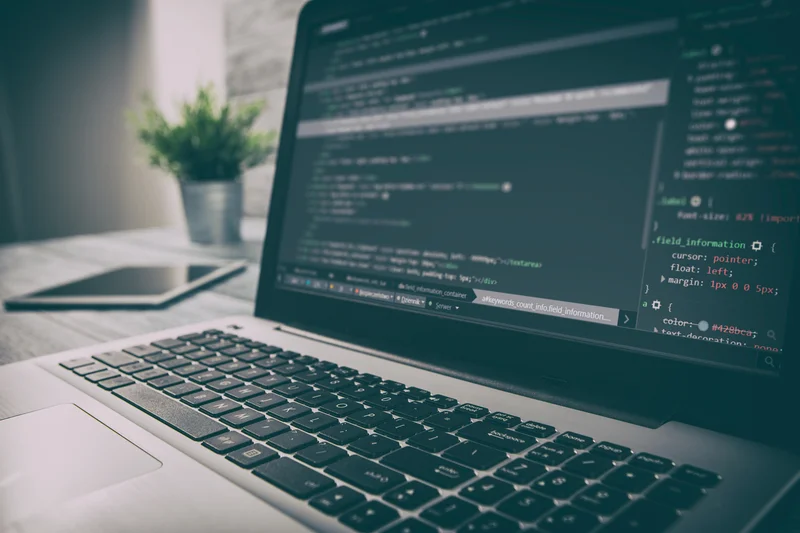
Documenting code is a vital finest practice for enhancing maintainability, enabling effective code management, collaboration, and information switch within software improvement groups. And that is just the difference between above-average and below-average maintainability. At SIG we now have seen newly built systems for which the maintainability was so low that it was no longer possible to effectively modify them—even before the methods went into manufacturing. Growth took so lengthy that the business surroundings (and due to this fact, user requirements) had already modified. Extra typically than not, such systems are written off earlier than they ever see a 1.zero release. Imagine two totally different software systems that have exactly the same performance.
These metrics help groups assess the ease of maintaining, managing, and modifying the software program over time. Code quality metrics gauge the clarity, conciseness, and consistency of the codebase, whereas reliability metrics consider the system’s capacity to perform as meant under numerous conditions. It permits for the system to reply agilely to shifting requirements and emerging tendencies, thereby facilitating efficient change administration and proactive anticipation of future needs. The capacity for flexibility within maintainable methods additionally helps the swift incorporation of developments, fostering innovation and steady enhancement. This adaptable nature eases the method of scaling, optimizing not only the present state but in addition paving the way for future progress and growth, making the system future-proof.

This all-or-nothing view on violations might lead builders to disregard the violations altogether. Upkeep efforts are lowered when issue decision and enhancements could be carried out shortly and simply. If efficient maintenance results in much less upkeep personnel (developers), it additionally lowers upkeep costs. When the number of developers stays the same, with environment friendly upkeep they have more time for different tasks, similar to constructing new performance.

Nested code ought to be minimized as it’s harder to observe the potential paths and logic move of deeply nested code blocks. It is preferable to extract conditional logic to methods or variables so it’s simpler to understand what is being evaluated. Early methodology returns are preferable to large blocks of code contained within a conditional. Top-level elements of a system which are more loosely coupled are easier to modify and lead to a more modular system. In this section, we focus on some misunderstandings about maintainability that are encountered in follow. Code evaluations and pair programming, while priceless, require quite lots of concentration and rigour.
We understand that it’s exhausting to see whether an individual “violation” of the guidelines on this book influences the overall maintainability of the system. That is why all developers must be disciplined and observe the rules to realize a system that is maintainable overall. Due To This Fact, your individual contribution is of great significance to the whole. Asset condition monitoring is a well-known and proven method for lowering the P-F interval of the asset. Machine design may be made very environment friendly by incorporating complicated fault tolerance mechanisms, which might improve its inherent reliability. Nevertheless, complicating the design can proportionally improve the time maintenance artificial intelligence cases technicians should spend on routine maintenance, decreasing its maintainability.
This approach allows for the early detection and resolution of coding errors, leading to a extra stable and reliable software product. By conducting common testing, developers can determine and handle potential points proactively, decreasing the chance of encountering severe bugs throughout manufacturing. Debugging aids in identifying and rectifying system vulnerabilities, contributing to the general robustness and longevity of the software. Such practices also facilitate smoother integration of new options and updates, ultimately enhancing the consumer experience and minimizing downtime. It helps in creating a solid basis for the software program, making it simpler to identify and tackle any potential points. By following standard coding practices, builders can streamline the development course of, facilitate collaboration, and make sure that the codebase remains clear and understandable.
Understanding software program maintainability allows organizations to identify improvement areas as properly as decide the value provided by current purposes or throughout improvement adjustments. At a high level, maintainability defines the benefit with which changes could be made appropriately. Correctness in this sense means that the supposed modifications are made without introducing surprising unwanted facet effects.
By utilizing high quality profiles, we can distinguish reasonable violations (for instance, a technique with 20 lines of code) from extreme violations (for example, a technique with 200 strains of code). After the next part, which discusses widespread misunderstandings about maintainability, we explain how high quality profiles are used to measure the maintainability of a system. When somebody gives you a problem and requirements, you’ll be able to provide you with an answer and translate that answer right into a language that a pc understands. If you regularly have to alter source code written by others (or even by yourself), you understand that it could be both very easy or really difficult. The change is nicely isolated, and checks verify that it really works as supposed. At different occasions, the only resolution is to make use of a hack that creates more problems than it solves.
By refactoring code and bettering documentation, teams could make it easier to maintain their methods up-to-date and effective. Several components contribute to maintainability, together with code quality, documentation, and modularity. Code high quality consists of components similar to readability, consistency, and ease. Documentation might help new staff members understand the code base and make changes with out introducing errors. Modularity permits totally different components of the system to alter without affecting different parts, making it simpler to make focused modifications without having to grasp the entire system. It helps builders (including your future self) perceive the system’s architecture, design selections, and tips on how to use or modify different parts.
We will explore the core elements of maintainability, together with modularity, simplicity, testability, flexibility, and reusability, and examine the metrics used to measure it. We will discuss one of the best practices for enhancing maintainability, corresponding to documenting code, utilizing standard coding practices, common testing and debugging, and refactoring code. By the end of this article, you’ll achieve a complete understanding of maintainability and its pivotal function in software program improvement and system management. Software Upkeep refers to the process of modifying and updating a software program system after it has been delivered to the customer. This entails fixing bugs, including new features, and adapting to new hardware or software program environments.
The key is to make these trade-offs consciously and document your selections. Now, let’s explore the world of maintainability and why it is essential for the longevity of your software program. Concerned with the adjustments in the software program that takes place to make the software program adaptable to altering user requirements. Reverse Engineering is the process of extracting information or design data from something man-made and reproducing it primarily based on the extracted info.

Testability also plays an important position in evaluating the efficiency of the system beneath different situations, guaranteeing that it meets the required requirements and features optimally. Therefore, prioritizing testability results in more resilient, adaptable, and efficient techniques. The second chart in Figure 1-1 shows the quality profile of a 2-star system. Discover that over one-third of the codebase is in units which would possibly be over 60 lines of code. Following the guidelines on this book not only results in Cloud deployment extra maintainable code, but additionally sets the right example for your fellow builders.
Currently, he’s an endowed Assistant Professor at Stevens Institute, and holds a PhD in Computer Science from the College of Cambridge. The use of this metric is debatable however might be used in conjunction with the above metrics or your group could create a compound metric based mostly on the above dimensions! As long because the metric makes sense to your team and your group you’re free to create your individual, albeit meaningful, metrics. A well-balanced structure, with not too many and not too few parts, of uniform size, is the most modular and allows easy modification by way of separation of concerns. SIG divides the methods within the benchmark by star score, starting from 1 star (hardest to maintain) to 5 stars (easiest to maintain). The distribution of these star ratings among systems from 1 to five stars is 5%-30%-30%-30%-5%.
In that case, adjustments made to 1 component of duplicated code could have to be applied to other areas too. Code duplication may be measured with static code evaluation tools that identify duplicated code segments. In the world of software architecture, maintainability is about taking half in the long game. By specializing in code readability, modularity, documentation, and take a look at protection, you are not simply constructing for at present – you are laying the foundation for years of successful evolution and enhancement.
The time period maintainability describes how easy and resource-intensive it is to perform maintenance on an asset. It may also be used to define the probability of an asset returning to its meant state upon completion of a maintenance task. In some instances, maintainability includes a system of continuous improvement – learning from the previous to improve the power to maintain up techniques, or improve the reliability of methods based on maintenance expertise.